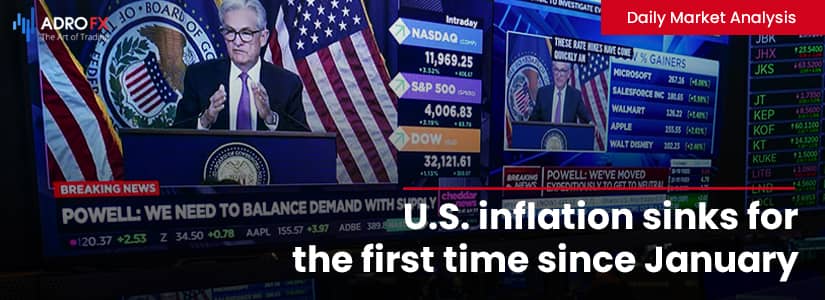U.S. inflation sinks for the first time since January: What That Means? | Daily Market Analysis

Key events:
- Eurozone – CPI (YoY) (Oct)
- UK – Autumn Forecast Statement
- USA – Building Permits (Oct)
- USA – Initial Jobless Claims
- USA – Philadelphia Fed Manufacturing Index (Nov)
U.S. consumer price data for October reinforced the view that disinflation has begun – a narrowing of the gap between observed inflation and the central bank's inflation target. This conclusion seems evident for core inflation – it peaked in June – but we need confirmation that the decline in core inflation from its September peak is not a one-time event. Core goods inflation is declining, but core services inflation remains stubbornly high at the expense of transportation and housing. The speed of disinflation is important to the economy and financial markets now because it will affect Fed policy, the level of the final rate, and how long the federal funds rate stays at that level. All of this affects the perceived downside risks to growth.

When you are desperately waiting for good news, the reaction can be euphoric when it finally arrives. This was perfectly demonstrated by the behavior of financial markets last week after the positive surprise of the U.S. consumer price inflation data: headline and core inflation were lower than the consensus expectation.
U.S. Treasury yields fell heavily – nearly 20 basis points for the 10-year yield and slightly more for the 2-year yield – reflecting expectations that the Federal Reserve will tighten policy less than previously expected.

The federal funds futures curve, which reflects the market's expectations for the future rate, has declined significantly. Investors now expect the final rate to be 20 basis points lower. This has caused the euro to strengthen against the dollar. Global bond yields are highly correlated with each other, so it's not surprising that bond yields have fallen hard as well. Equity markets in Europe rallied, and Wall Street opened much higher than the previous day's close. This reflects the usual discount rate effect – lower government bond yields raise the net present value of future dividends – as well as lower concerns about downside risks from ever-rising policy rates. Finally, the price of gold also rose:

This may look counterintuitive – because inflation has declined more than expected, which should affect gold as an inflation hedge – but it reflects the confidence that real interest rates will rise less than previously expected.
The market reaction to positive economic data surprises has much in common with watching fireworks: impatient waiting for the fuse to be lit, delighted observation as the arrows light up the night sky, soon followed by the question of what comes next.
The good news is that disinflation seems to have begun in the U.S. – the narrowing of the gap between observed inflation and the central bank's inflation target.
After peaking in June, headline inflation is on a clear downward trend. Inflation excluding food and energy peaked in September, so we need confirmation that the decline in October was not an isolated one, given that core inflation has declined for four consecutive months after peaking in March. Core goods inflation – excluding food and energy – has begun to decline since July, while core services inflation - excluding energy services – remains stubbornly high at the expense of transportation and housing. The latter rose 0.8% m/m in October-the biggest increase since August 1990-and accounted for more than half of the monthly increase in core inflation. Over the past 12 months, it has accounted for more than 40% of the total increase in core inflation. With the correction in the housing market and the prospect of a weaker labor market, core inflation will eventually decline, but it may take time.
The speed of disinflation is important to the economy and financial markets now because it will affect Fed policy, the level of the final rate, and how long the federal funds rate stays at that level. All of this affects the perceived downside risks to growth. Financial markets worry consistently. When fears of further significant rate hikes subside, recessionary concerns will become the dominant theme.









